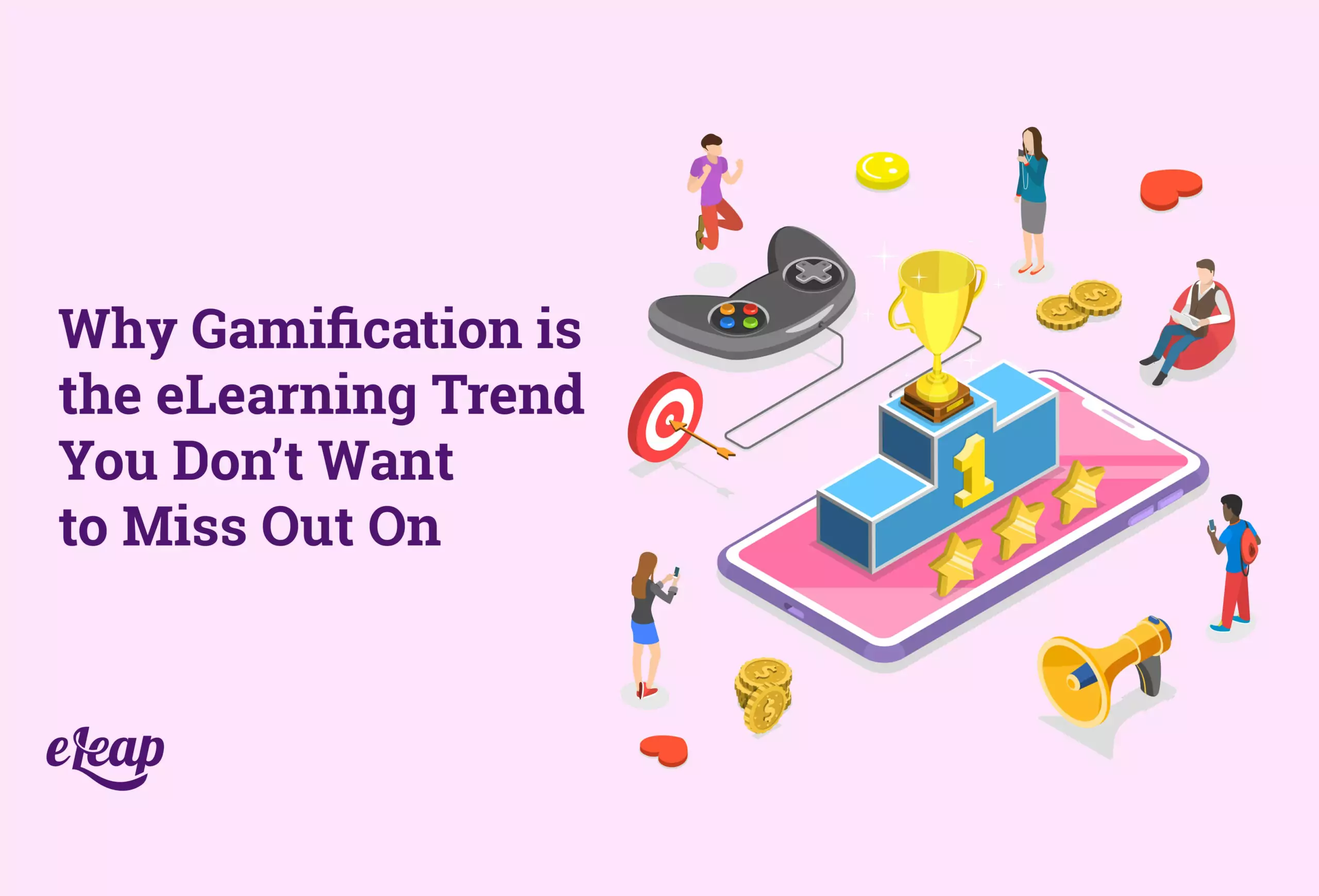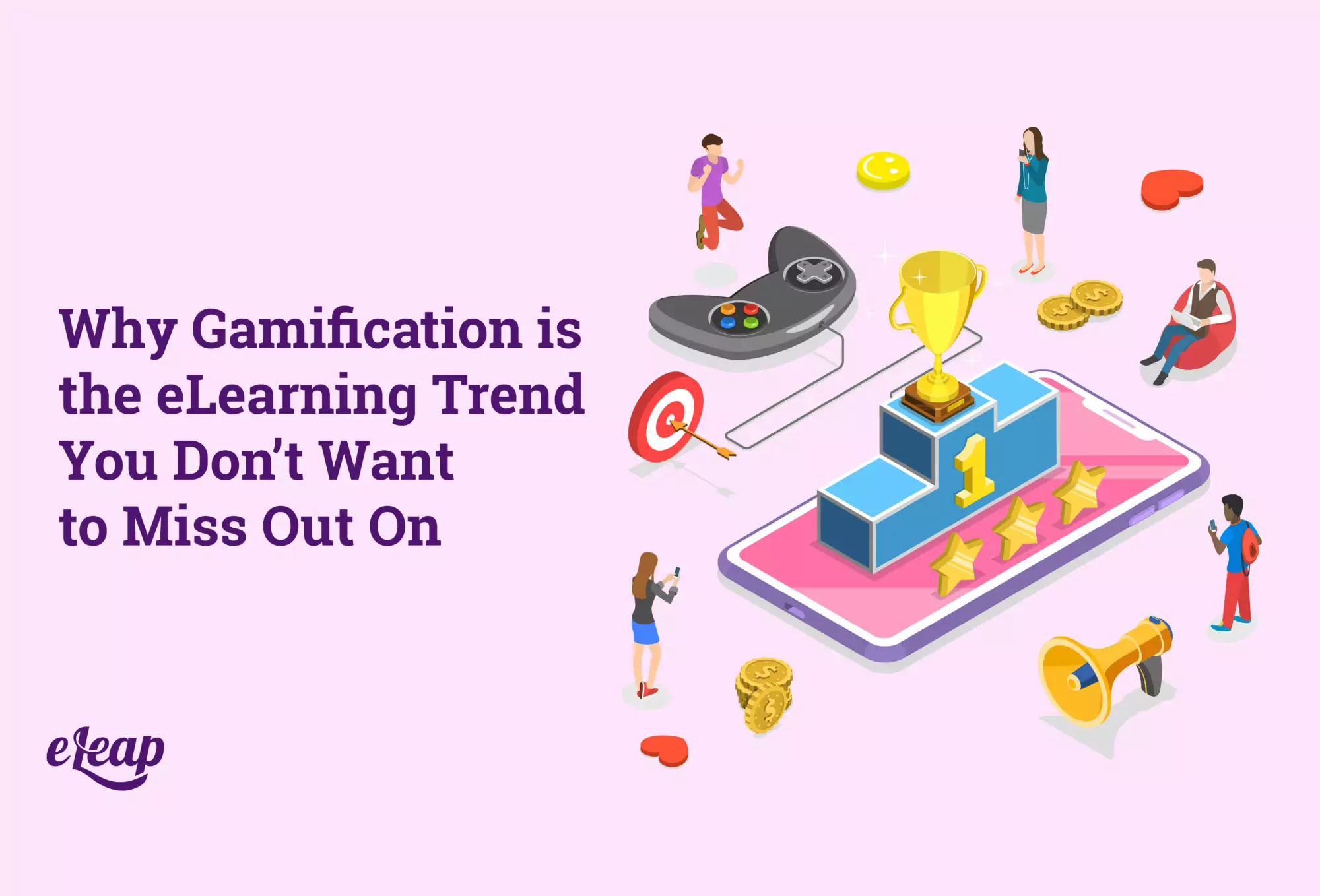Why Gamification is the eLearning Trend You Don’t Want to Miss Out On

As you probably already know, an effective learning management system can positively impact your training processes in a number of ways. Learning Management Systems can bring your team many more benefits than you first anticipated, but many people are unaware of all the different elements that an LMS can incorporate.
One such element is gamification, and it actually has the potential to revolutionize the way training is conducted. Printed materials can be monotonous, boring training videos are a thing of the past. There is no doubt that gamification enhances employee engagement, learning speed, and retention of information. Gamification is an extremely effective way to train, and one that generally receives positive responses from employees and trainees alike. But what exactly is gamification? And why is it the eLearning tool you don’t want to miss out on?

What is Gamification?
Gamification is simple, it’s the integration of games and game-like features, such as competitions, into your organization’s learning management system. Games have the potential to produce big results. Game-like elements are incorporated into other eLearning platforms to motivate employees as well as increase engagement and help with better retention of information.
Even though you might be thinking “how effective can games really be?”, gamification can be amazingly effective in eLearning. As already state, gamification in the workplace can increase retention and engagement. In many industries, gamification can be hugely beneficial to eLearning because it is such a flexible concept. Embedding gamification in your Learning Management System is one of the best decisions you can make to enhance training. But what forms can gamification take?
Avatars
Avatars are a commonly used form of gamification within many eLearning programs. Employees can use avatars to appear in games. Not only are avatars fun, immersive, and engaging, but they can be highly effective in retraining people at different levels when they are all going through a similar training process. Employees could benefit from this approach, as they would gain a better understanding of the company, its products, and its approach. Another place you might see the use of avatars is in recruitment or training videos.
Simulations
That’s right, the future is upon us. Simulations are a form of gamification that can be very beneficial in eLearning, particularly for certain employees who are required to use their training frequently in real-world scenarios that can be potentially threatening or urgent. Adding virtual reality and augmented reality to a training program is an excellent way to create a gamified experience for employees without putting them in danger. For example, simulations are frequently used to train pilots and police officers.
Task-Oriented Gamification
A task-oriented approach to gamification is very beneficial for employees who need to learn a specific process. A brand-new mechanic needs to learn how to change brake calipers, for example. With task-oriented gamification, it’s standard for administrators to be able to assign tasks and provide options for completing them. Users can then freely use gamification to complete tasks and learn procedures. This is very beneficial for tasks that take a lot of repetition to master.
Assessments and Tests Using Gamification
Gamified assessments provide a low-pressure snapshot of what employees know either in theory or in practice. In many cases, administrators can choose to hide the assessment from employees so that they don’t even realize what’s happening. Leaders can use this data to structure future training sessions, assist employees who might be struggling, or clarify points that are generally unclear. Remember, the key to gamification assessments is to assist employees and help them learn, not to catch them out.
Why Does Gamification Work So Well for Training?
With the right amount of planning and effort put into integration, gamification can work wonders for training your employees. Here are some ways in which gamification can upgrade your Learning Management System.
You Can Identify Learning Objectives and Set Timeframes
If you want your employees to learn a particular skill set, master a certain ability, or just improve their knowledge within a certain amount of time, gamification can help. Establishing clear goals and a timeline for employee training is a crucial first step.
Gamification Can Help You Measure Progress
Games can help you to measure the progress of different employees. The data provided by gamification can be crucial for this, and can also help leaders to step in and assist those who might need a little extra clarification on a certain topic.
Make Sure Your Employees Are Participating
Games increase engagement in general, but that doesn’t mean you never have to check in with your learners. The effectiveness of gamification depends upon how many people use it. Integrate opportunities for employees to participate in the game, such as check-ins. Additionally, avoid making any games feel like a chore. To ensure everyone enjoys training, give them the time and space to enjoy the game, rather than trying to force them to complete it when, for example, they have other deadlines to meet.
Gamification is the future of eLearning for a reason, and there are certainly plenty of reasons why so many organizations are choosing to use games within their Learning Management Systems. Games, or even just gamified features and elements, help to bolster employee engagement, as well as improve retention and overall learning.
One thing is for sure, often, we ask a lot of our employees, and many positions require a significant amount of training. Moreover, some jobs require regular updates to learning and the need to retain new information. In such circumstances, training can easily become boring and repetitive, but gamification can help to mitigate the cyclic or unengaging nature of learning. If you want to provide your employees with the best possible chance to train and learn new information, all while actually enjoying the process, gamification may be your best bet!